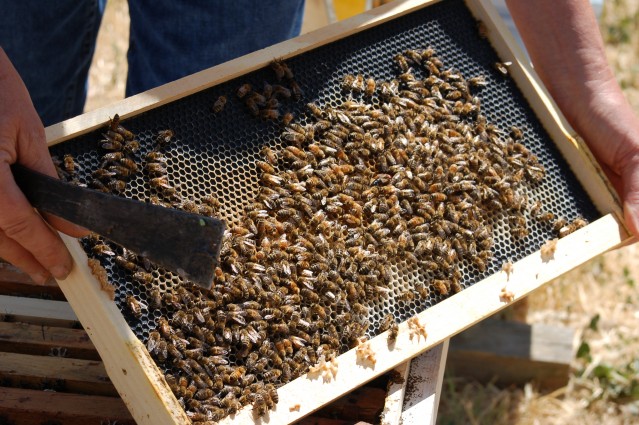Bees – for some reason – seem to fascinate many of us. Perhaps it’s their social structure: the queen, the workers, the drones, producing honey and baby bees and living their short lives in a super-organized way that would be the envy of any business. Like many an enterprise today, they even have guards outside the hives to sound the alarm if things get out of hand.
So when five years ago the world learned that bees in America and Canada were dying in large numbers, and hives were becoming defunct, the agricultural community and the beekeepers and just plain people became alarmed. Hives were deserted, the bees gone, presumably dead, honey production stopped, and the bee industry crippled.
The problem was called Colony Collapse Disorder, and it threatened California’s very profitable almond industry, which is dependent on bees to pollinate the trees and keep the nuts growing. And not just almonds: 130 crops in California alone depend on honey bees. Beekeepers from around the nation load their hives on trucks and bring them to California and rent them out to growers. As the disease, or whatever it is, spread, the price of renting ever-more-scarce bees went up.

Once the news media started reporting heavily on the plight of the bees and the beekeepers, interest soared. Researchers at universities around the country started looking into the problem; money was donated to figure out what was killing the bees. Stories appeared frequently about the scientific efforts to figure out what was causing Colony Collapse Disorder (CCD) and what would cure it. With all that attention you’d think they would have solved the problem.
But what the scientists have discovered is that they really don’t know very much about bees. They don’t have a baseline of what goes on on the microscopic level in the hives. What viruses already exist in healthy colonies? You’ve got know that before you can start to understand if a virus is normal or abnormal and may be killing bees. Scientists like Joe DeRisi at the University of California San Francisco say they’ve made great strides, even though they haven’t found a culprit.